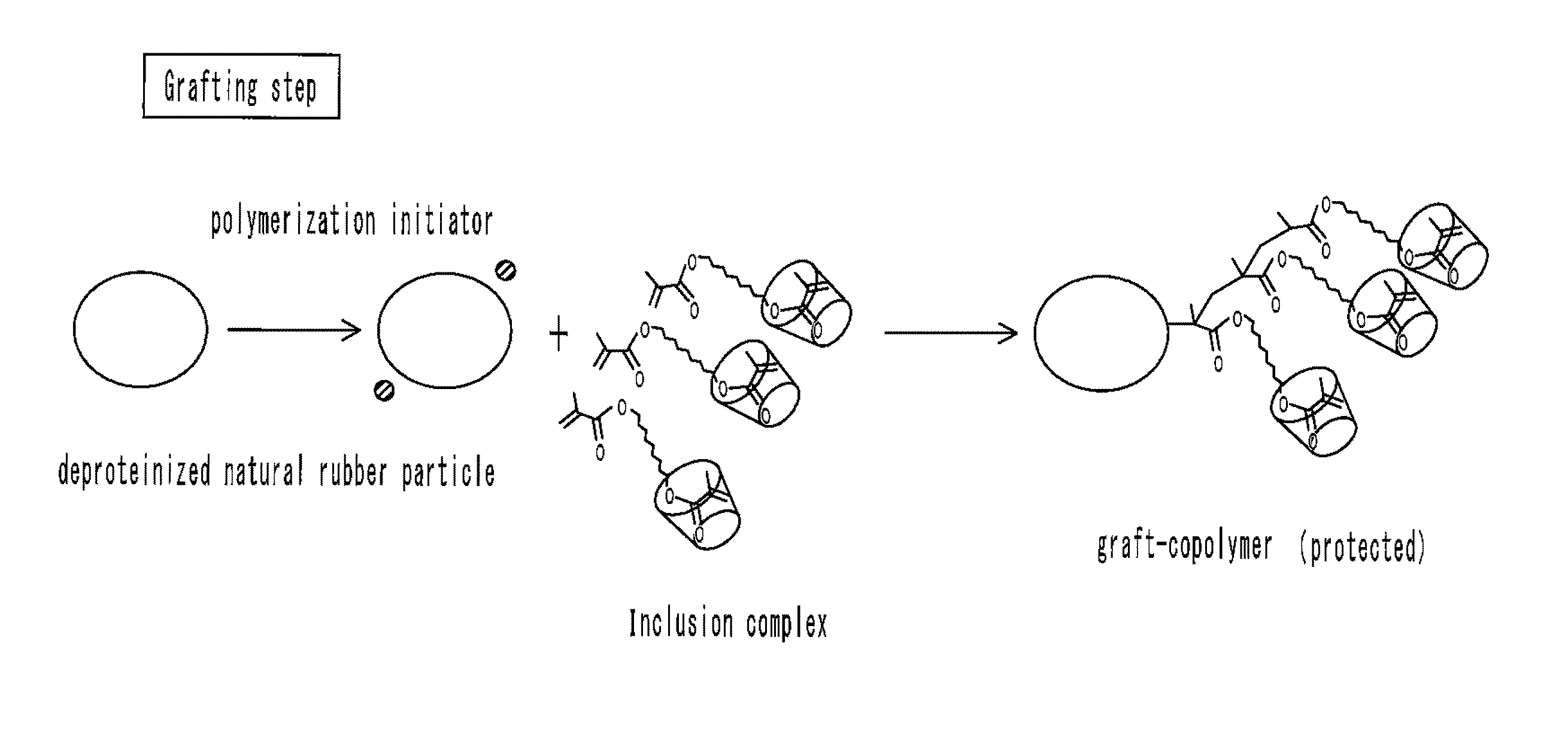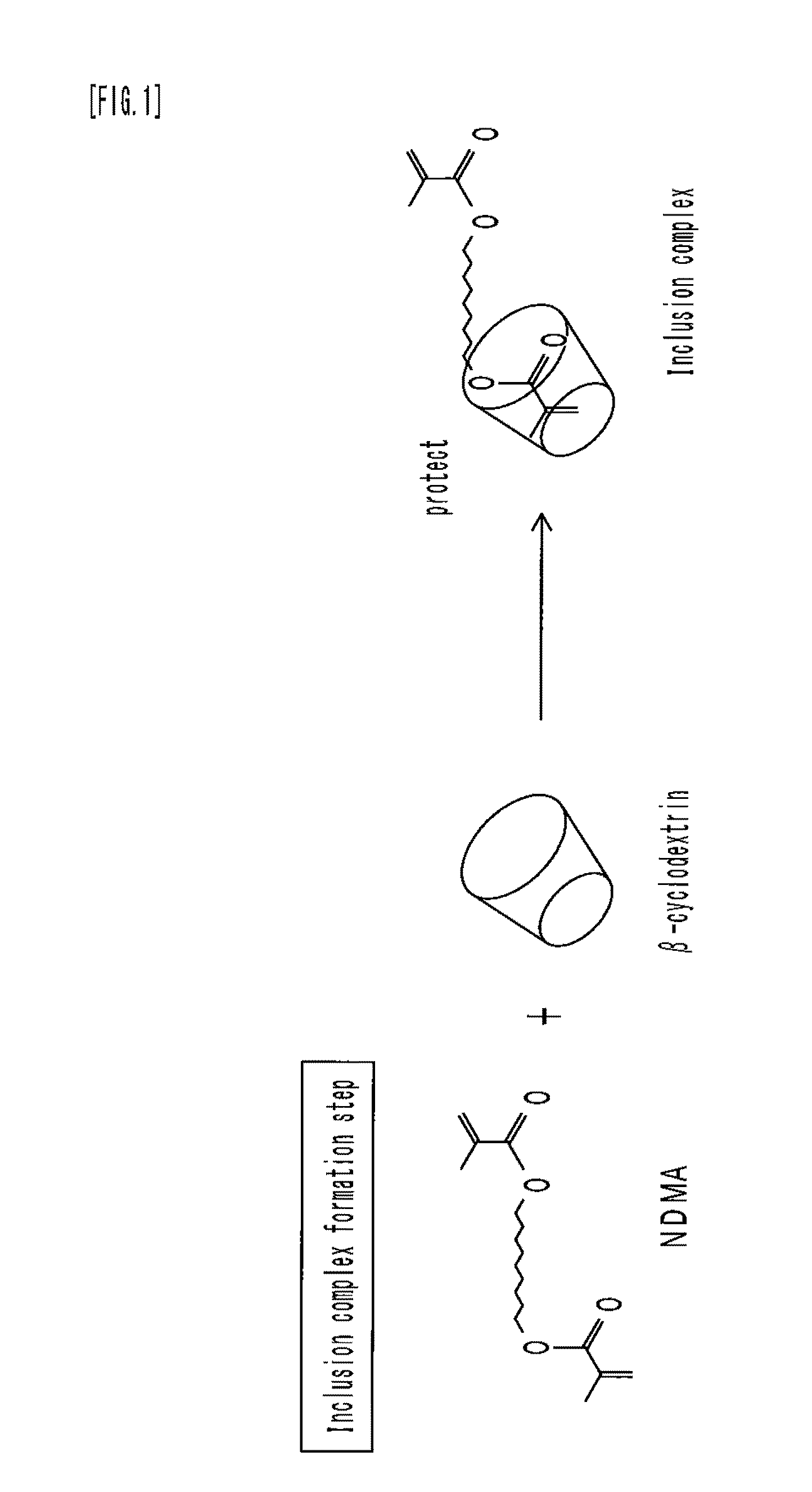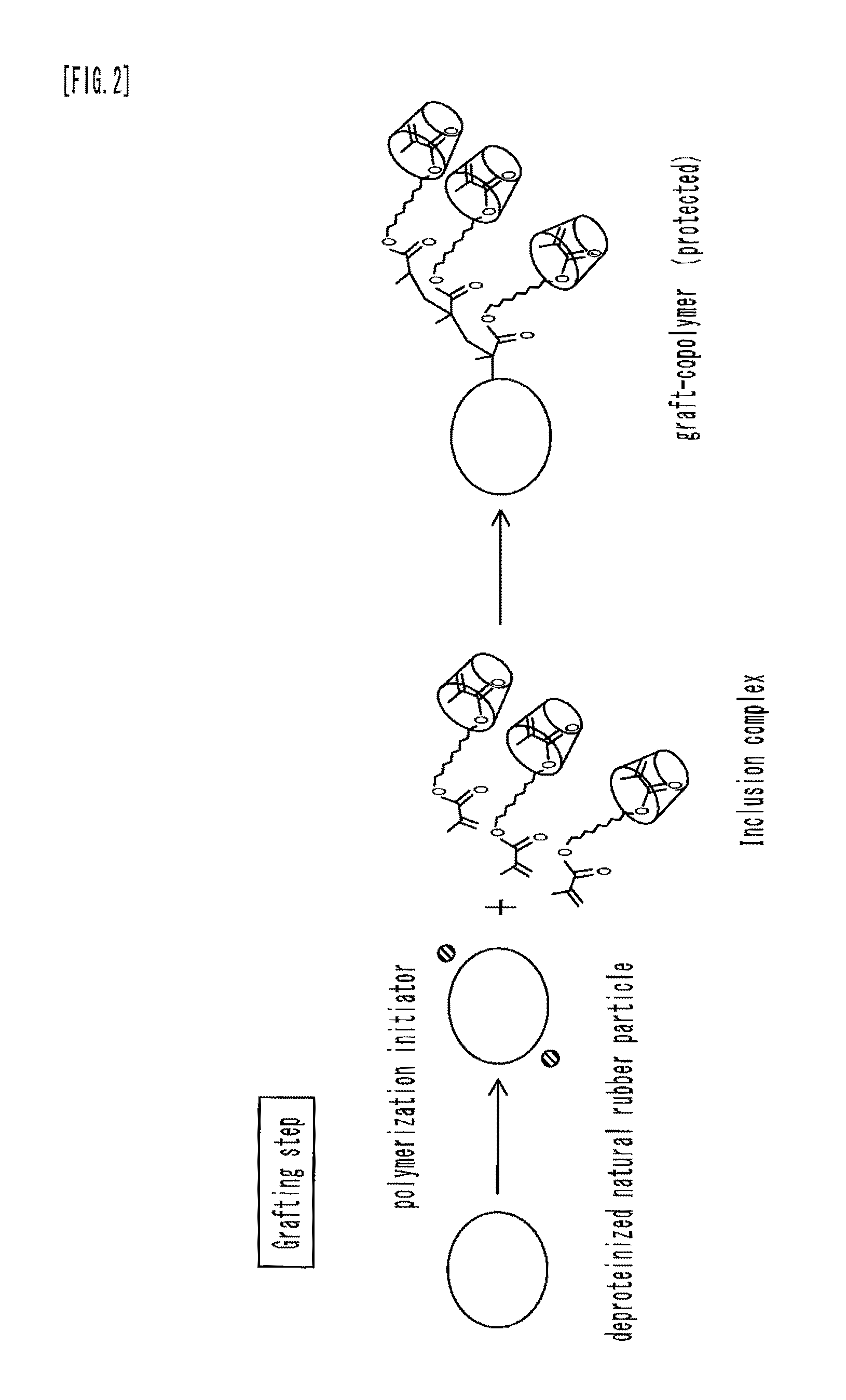Modified natural rubber particle, production method thereof, and modified natural rubber latex
a technology of natural rubber and production method, which is applied in the direction of transportation and packaging, special tyres, tyre parts, etc., can solve the problems that natural rubber is also known to be inferior in heat resistance, oil resistance, ozone resistance, etc., in comparison with synthetic rubber, and achieves low reactivity, reduced production process, and simple production
- Summary
- Abstract
- Description
- Claims
- Application Information
AI Technical Summary
Benefits of technology
Problems solved by technology
Method used
Image
Examples
examples
[0065]Each of 4 types of multifunctional vinyl monomers was copolymerized onto the deproteinized natural rubber particles to produce the modified natural rubber particles. The description thereof will be made in order.
[0066]As a natural rubber latex, a high ammonia latex (manufactured by Golden Hope Plantations Berhad (Malaysia); rubber content concentration: 60.2% by weight; ammonia concentration: 0.7% by weight) was used. First, the high ammonia latex was diluted to 30% by weight of rubber content concentration. Next, to the diluted latex, 1.0 part by weight of sodium dodecyl sulfate (SDS: anionic surfactant) relative to 100 parts by weight of rubber content of the diluted latex was added to stabilize the latex. Next, 0.1 parts by weight of urea relative to 100 parts by weight of rubber content of the latex was added to the latex and the resultant mixture was subjected to a protein decomposition treatment by stirring the resultant mixture at room temperature for one hour. Subseque...
PUM
| Property | Measurement | Unit |
|---|---|---|
| molar ratio | aaaaa | aaaaa |
| weight | aaaaa | aaaaa |
| pH | aaaaa | aaaaa |
Abstract
Description
Claims
Application Information
 Login to View More
Login to View More - R&D
- Intellectual Property
- Life Sciences
- Materials
- Tech Scout
- Unparalleled Data Quality
- Higher Quality Content
- 60% Fewer Hallucinations
Browse by: Latest US Patents, China's latest patents, Technical Efficacy Thesaurus, Application Domain, Technology Topic, Popular Technical Reports.
© 2025 PatSnap. All rights reserved.Legal|Privacy policy|Modern Slavery Act Transparency Statement|Sitemap|About US| Contact US: help@patsnap.com



